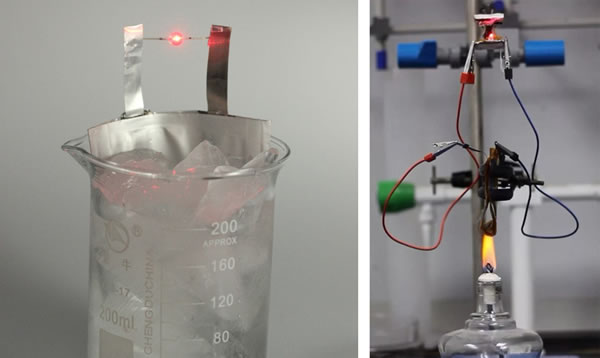Zhejiang University research and development "super battery" can work in -40 °C environment
Recently, a new type of aluminum-graphene battery developed by the Department of Polymer Science and Engineering of Zhejiang University, this battery can not only overcome the temperature, and other issues, and efficient charging performance, can achieve "charging two seconds for 5 seconds." Research team members told reporters that the current research and development of this new type of battery is still in the laboratory stage. To achieve commercial mass production, it is still necessary to overcome multiple technical problems and there is still a long way to go. Charge 70 times a day for 70 years The new aluminum-graphene battery cathode is a graphene film, and the negative electrode is metal aluminum. As long as two “films†are connected in series, a group of LED lamps can be lighted. According to the R&D team, the new aluminum-graphene battery is to replace the current lithium battery. As the most widely used battery for smart phones, lithium batteries have many disadvantages that are difficult to solve. In addition to the unstable performance under low-temperature and high-temperature conditions, lithium batteries have a limited lifespan, and after a year or two, the battery life is greatly reduced. Laboratory data shows that the new aluminum-graphene battery can operate in a -40°C to 120°C environment. In a -30°C environment, 1000 charge and discharge performances can be achieved, while in a 100°C environment, 45,000 cycles can be achieved. In addition, the new battery's flexible features cause it to bend 10,000 times and the capacity can still be maintained. If a single charge-discharge process is used as a cycle, the new aluminum-graphene battery can maintain a 91% performance after 250,000 cycles. The research team estimates that if a smart phone uses such a battery, it can be used for nearly 70 years even if it is charged 10 times a day. On December 15, the team’s research results were published in the core journal Science Advances. Up to 1.1 seconds full charge In 2015, the research team of Stanford University Dai Hongjie published a paper and proposed to use pyrolytic graphite foam to make battery positive electrodes and develop high-efficiency aluminum ion batteries. The research and development team of Zhejiang University, inspired by this theory, began to develop new types of batteries. Professor Gao Chao, a research and development team member, said that as the most abundant metal element in the earth's crust, aluminum is cheap and safe, and it is an ideal negative electrode material in battery preparation. However, for many years, the matched cathode material has not been used for a long time, and the overall performance of the aluminum battery has been difficult to achieve. After introducing graphene, this problem is solved. "This kind of aluminum-graphene super battery has much higher rate performance and cycle life than other batteries." Gao Chao said that battery performance depends critically on the 'running' state of electrons and ions between the positive and negative electrodes. Electrode materials allow as many electrons and ions to "run smoothly." According to superb claims, although some current smart phones also have a fast charging function, it seems that the battery is soon full and the actual battery life is not long. In the laboratory, the new battery can fully charge up to 1.1 seconds with minimal energy loss. Gao Chao introduction, this data shows that if the future of new batteries applied to mobile phones, "charging 5 seconds to speak 2 hours" can become a reality.
Mono Calcium Phosphate ,the chemical formula is Ca (H2PO4)2.H2O, molecular weight of the body is 252.06, after dryed the product is white or slightly yellow micro powder or granules, the relative density of 2.22 (16 °C). Slightly hygroscopic, soluble in hydrochloric acid, nitric acid, slightly soluble in cold water, almost insoluble in ethanol. At 30 °C, 100 ml of water soluble MCP 1.8g. The aqueous solution was acidic, heating the aqueous solution can get calcium hydrogen phosphate. Lose crystal water at 109 °C and decomposed into calcium metaphosphate at 203°C. Applications:Monocalcium Phosphate is used to supply mineral nutrition such as phosphorus (P) and calcium (Ca) for animal, which can be easily digested and absorbed. Extensively applied as additives of Phosphorous and Calcium in aquatic animals feed.Higher water solubility of MCP is required in aquatic animals feed.
Calcium Phosphate Supplement,Calcium Phosphate,Calcium Phosphate Powder,Dcp Chicken Feed MIDI FEED BIOTECH LIMITED , https://www.chinabromine.com
Figure: Flexible Aluminum - Graphene Battery Lights "ZJU 120" LED String 
Left: The battery works in an ice salt bath; Right: The battery does not burn at high temperatures